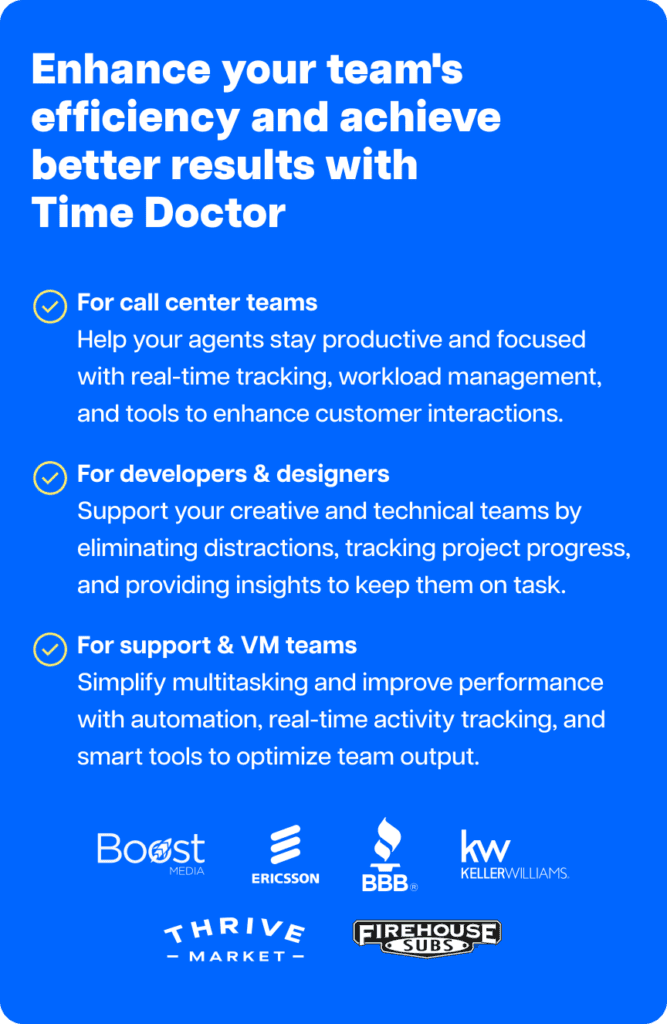Hard work is always a key ingredient to success, regardless of industry. However, it is easy to fall in love with the grind, forgetting that there may be new ways to make the job easier. Given the importance of workforce efficiency in today’s competitive landscape, it is wise to leverage available technology for the workplace.
One popular way successful businesses and teams do this is by using automation technology. Automation streamlines repetitive tasks, freeing valuable time for strategic thinking and complex problem-solving, allowing individuals to focus on high-value responsibilities and innovation.
The impact of (the lack of) automation on workforce efficiency
A 2021 UIPath survey found that more than two-thirds, or 67%, of global workers feel that they are constantly performing the same tasks repeatedly. On average, they reveal that they spend around four and a half hours a week on tasks that they believe can be automated.
These tasks include manually inputting data or creating datasets (59%) and scheduling calls and meetings (57%). And this can be disheartening, especially when 58% of workers already believe their jobs don’t allow for much creativity. This can lead to burnout, and it seemed that it ultimately did.
In a follow-up survey, 94% of respondents revealed that they felt exhausted after a workday for at least one day per week. They reported frustrations with mundane tasks such as replying to emails and manual data entry. And, for 91% of them, automation is the solution as this can help improve their performance by:
- Saving time (52%)
- Increasing productivity (46%)
- Allowing them to focus on more important work (45%)
Business leaders think so, too, with 85% of survey respondents already on board agreeing that automation and automation training not only improve productivity but also help organizations retain and attract new employees.
Benefits of automation across functions

From streamlining repetitive tasks to fostering unparalleled accuracy and efficiency, leveraging technology for the workplace brings forth many benefits across various business functions. They include:
- Workflow management: Automation tools facilitate seamless task distribution, tracking progress, and orchestrating workflows, ensuring timely completion and reducing manual oversight in various work models. Tasks are distributed and tracked in real-time, minimizing delays and optimizing overall process timelines.
- Data handling and analysis: Automation minimizes human errors in data entry, analysis, and reporting, leading to more accurate and reliable data. Accelerated data processing enables quicker decision-making processes, critical for staying agile in dynamic business environments. It also enhances the data accuracy, providing a solid foundation for informed decision-making and strategic planning.
- Customer relationship management: Automated CRM systems enable businesses to tailor interactions based on customer data, fostering personalized customer experiences. It allows for targeted marketing campaigns by analyzing customer preferences and behaviors, improving the effectiveness of marketing efforts. Also, streamlined customer support processes lead to faster issue resolution, contributing to increased customer satisfaction.
- Human resources: Automated applicant tracking expedites the hiring process, reducing time-to-fill positions and ensuring timely recruitment. Moreover, automating onboarding processes improves the new employee experience, ensuring a smooth transition into the organization. Also, automation can help performance evaluations by providing a standardized and objective assessment of employee performance, fostering a fair and transparent appraisal system.
- Payroll and time-tracking: Automation can help increase productivity by streamlining payroll processing, time tracking, and attendance management. It also systems minimizes manual errors in payroll calculations, ensuring accurate and timely payment to employees. Plus, it reduces administrative overhead costs and allows HR teams to focus on more strategic HR functions.
As such, the surge in demand for AI-powered automation technology highlights its undeniable impact on boosting operational efficiency. This wave is accompanied by the widespread popularity of no-code and low-code tools, a trend that democratizes automation by making it accessible to non-technical personnel.
This accessibility empowers individuals across various departments to actively contribute to creating and implementing automation applications. Beyond efficiency gains, this inclusive approach fosters a culture of creativity and innovation. Nontechnical staff leverages automation tools to streamline processes, accelerate innovation, and cultivate a sense of self-sufficiency and agility throughout the organization.
Looking to take your team’s effectiveness to the next level? While automation is a great way to improve efficiency, there are other strategies to consider. Download our latest ebook, Quick Start Guide to Building High-Impact Teams, for 7 practical strategies to help you build effective teams and scale your business in 2024.

Holistic digital transformation

Having software solutions, however, is not enough. In a 2022 survey by KPMG, it was found that while 72% of respondents revealed that their organizations had provided them with digital tools and technology to improve efficiency, only 42% believed that their personal productivity somewhat or significantly increased.
There is, of course, a complex mix of causes why this is so. Nevertheless, one major reason is the lack of a broader digital transformation strategy that includes clear and ample training programs on digital tools.
The same UiPath survey found that only 44% of global workers received relevant training. The silver lining is that 91% of them believed that training on automation tools has improved their job performance. As such, getting everybody on board is very important.
Deploying digital transformation initiatives at the organizational scale is crucial to avoid the potential pitfalls of relying solely on select departments powered by automation. The risk of creating bottlenecks elsewhere in the organization emphasizes the need for widespread buy-in to ensure a harmonious and efficient workflow.
Achieving this widespread acceptance is paramount to preventing process siloes, where isolated departments operate independently, hindering overall efficiency and collaboration.
To foster such organizational alignment, proper orientation and training programs are indispensable. These initiatives familiarize employees with new digital tools and instill a shared understanding of the broader digital transformation strategy.
Embracing holistic digital transformation necessitates equal attention to software tools and people, recognizing that success is not only about the technological shift but also the organizational cultural shift. By emphasizing training and orientation, businesses can cultivate a workforce that is not only adept at utilizing new technologies but is also aligned with the overarching goals of the digital transformation journey. This dual focus on tools and people ensures a comprehensive and successful transition to a digitally transformed and integrated organizational landscape.
Measuring the ROI of automation
What makes digital transformation successful are tangible returns on investment (ROIs). Measuring the ROI of automation goes beyond assessing immediate efficiency gains; it involves a comprehensive evaluation of key performance indicators (KPIs) and metrics that reflect the broader impact on organizational success.
These metrics, of course, will ultimately depend on your business type and your objectives and goals. However, there are common KPIs for automation that can serve as vital benchmarks to gauge the effectiveness of automated processes. These typically include:
- Error reduction rate. One can calculate the percentage decrease in errors by comparing the number of errors before and after implementing automation. This involves conducting regular audits and tracking error rates to showcase the tangible improvement in data accuracy.
- Task completion. Typically, analytics-savvy organizations use time-tracking tools to record the duration of tasks before and after automation implementation. They analyze the data to quantify the reduction in task completion time, providing a clear indication of efficiency gains.
- Cost savings. You can compare operational costs before and after automation, considering factors such as labor expenses, manual processing costs, and potential error-related expenses. The difference in these costs demonstrates the financial benefits derived from automation.
- Resource utilization. Organizations calculate resource utilization by categorizing tasks, tracking time spent on productive activities, and calculating the utilization percentage. Task-based calculations measure efficiency gains from automation, considering time, effort, and output improvements, providing insights for optimizing human resource deployment.
- Process scalability. Evaluate the performance of automated processes under varying workloads. Assess how well the processes adapt to increased demands by analyzing scalability metrics, such as response times and system performance, ensuring that automation remains effective in handling growing demands.
In essence, measuring the ROI of automation transcends the traditional focus on efficiency gains. It involves a multifaceted evaluation of KPIs, metrics, and tangible benefits, providing organizations with a comprehensive toolkit to assess the broader impact of automation on operational excellence.
Of course, this should be weaved together with other relevant data and KPIs such as customer satisfaction, sales, and profitability to gain clearer insights into overall business impact. To help you have a more concrete sense of the benefits of automation, we include real-world cases below where businesses found automation success.
The benefits of automation in real life

It is widely recognized that digital transformation and the proper strategic implementation of automation technology can significantly enhance operational efficiency. But it is always good to have a few examples handy to remind ourselves what automation can offer.
These real-world instances below showcase how forward-thinking companies have leveraged technology to solve problems in the workplace.
- AMN Healthcare (Healthcare). Automation allowed AMN Healthcare to cut down the time used for handling employee timecards by nearly 68% and minimize the hours needing human involvement from 8000 to 2600.
- Credigy Solutions Inc. (Financial Services). Fully automated, the due diligence reviews for loan-related documents played a pivotal role in the company’s growth, contributing to a compounded annual growth rate exceeding 15%.
- Horizon Global (Manufacturing). Automation increased accuracy by 99% in data entry and decreased processing costs by 20%.
- Western Union (Financial Services). Automation improved time to completion for agent requests from 10 minutes to 20 seconds, allowing 3 million tasks to be completed annually.
- GAM Distributors of Medicines and Perfumery (Logistics). In one year, the organization automated 22 processes, allowing them to save around BRL 120,000 (about $24,000) every year.
Digital transformation challenges
But, again, there are far more cases where digital transformation and automation efforts failed. According to a Zippia report, the success rate is only around 30%. This is because, as mentioned, digital transformation requires a holistic shift, inviting challenges from different areas and aspects from within and outside the organization. This, of course, involves people, mainly people—from top management to rank-and-file employees.
Organizations face a few significant hurdles when incorporating automation technology and pursuing digital transformation initiatives.
- Absence of a clear digital transformation strategy: Without a clear strategy, aligning digital initiatives with broader business goals becomes immensely challenging, affecting the success and coherence of the transformation efforts. Organizations must establish a comprehensive roadmap to address this, aligning digital goals with overarching business objectives and fostering clarity and direction throughout the transformation journey.
- Change management strategy deficiency: Managing organizational change is critical, as one would learn from online business degree programs. Without an effective strategy, resistance and employee apprehension can hinder the adoption and success of digital transformation. As such, implementing a robust change management plan inclusive of communication strategies, training, and transparent leadership can mitigate resistance and foster employee buy-in during the transformation.
- Disjointed processes: Many organizations have their operations divided across different departments, making automation challenging. It is hard to see where to begin and what you should end up with. As such, companies must carefully analyze their processes thoroughly, plan strategically, and consider how to string automated processes effectively, and also the wisdom to know when one is overdoing it.
- Insufficient IT preparedness: The proper rollout automation initiatives do not only require the appropriate infrastructure but also the right skills and attitude. Readiness encompasses not just the technical aspects but also the readiness of the human element. As such, it is crucial to equip your organization with the necessary skills and to foster a proactive mindset to navigate the changes that come with automation.
Future trends in automation technology
The overall trajectory for automation, however, is up and up. Current trends highlight the dynamic evolution of automation technology, with a focus on strategic leadership, integration, connectivity, personalization, and the growing role of artificial intelligence in shaping the future of automation for organizations around the world. Here are five of them:
- Strategic leadership by CIOs. Chief Information Officers (CIOs) are increasingly taking charge of automation strategies, and developing enterprise-level approaches to governance and platform technology, indicating a shift in leadership dynamics.
- Convergence of automation platforms. The rise of Robotic Process Automation-plus (RPA-plus) platforms involves the integration of capabilities from adjacent business process automation technologies, fostering a more comprehensive and unified approach to automation.
- Industrial Internet of Things (IIoT) integration. The adoption of Industrial Internet of Things (IIoT) technology is reshaping manufacturing processes and playing a pivotal role in the future of automation, emphasizing the connectivity and data-driven aspects of industry transformation.
- Personalization through automation. Automation is evolving to deliver greater personalization, enhancing user experiences by tailoring services and interactions to individual preferences.
- AI-driven automated decision-making. Artificial Intelligence is increasingly employed for automated decision-making, signaling a trend towards more sophisticated and data-driven decision processes.
These do not only bolster the effectiveness of automation platforms but also their adoption rates. Once these trends become normalized, we can expect more organizations to improve efficiency and other KPIs. Note, however, that as automation becomes popular, ethical considerations will be involved.
Navigating the ethical landscape of workplace automation

As workplaces embrace automation technologies to enhance efficiency and productivity, ethical considerations become paramount in ensuring a fair and responsible implementation. Addressing these ethical dimensions is crucial for maintaining a balance between technological advancements and the well-being of the workforce.
Addressing job displacement concerns
One of the primary ethical considerations in workplace automation revolves around potential job displacement. As tasks become automated, there is a legitimate concern about the impact on employment opportunities. Organizations must proactively address these concerns by implementing measures such as reskilling and upskilling programs to equip employees with the skills needed for emerging roles. This ethical approach not only safeguards job security but also fosters a sense of inclusivity and support within the workforce.
Ensuring employee privacy
Automation often involves the collection and processing of vast amounts of data, raising concerns about employee privacy. Organizations must establish robust data privacy policies and practices to ensure that employees’ personal information is handled ethically and responsibly. Transparency in how data is used, stored, and protected is essential for maintaining trust and upholding the ethical standards of workplace automation.
Responsible use of automation technologies
The responsible use of automation technologies encompasses a commitment to deploying these tools in ways that prioritize ethical considerations. Organizations must assess the potential societal impacts of automation, considering factors such as income inequality and access to opportunities. Implementing guidelines for ethical decision-making in the development and deployment of automation technologies ensures that organizational goals align with broader societal values.
As such, good digital transformation leadership entails a solid ethical framework that not only advances technological progress but also prioritizes the well-being of the workforce and society at large.
Work smarter through collaborative expertise
To achieve workforce efficiency through adopting automation tools, one must first be efficient in planning and implementing a holistic digital transformation strategy. Like most things, there is a smart way of doing this. And that is to enlist outside help. This is especially true if, after honest assessment, your organization has yet to have the competencies to see your digital transformation project through.
Always remember that you are not alone in your digital transformation journey. The best help you can get is from the software providers themselves. They know the ins and outs of their platforms and have the experience of helping other clients achieve their goals under their belt. You’ll be one step closer to getting there through collaboration and partnership.

Natasha is a content marketing specialist who thinks it’s kind of fun creating content marketing strategies for SaaS businesses. In her free time, she likes spending time watching Netflix.


